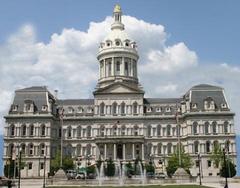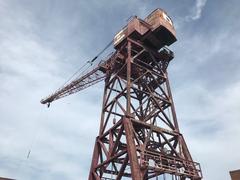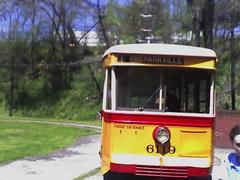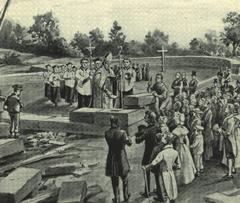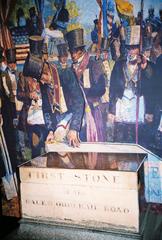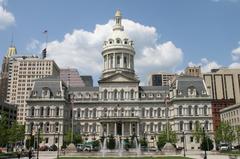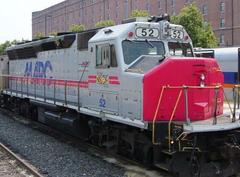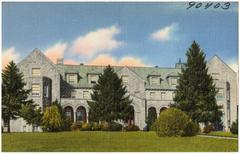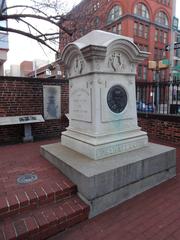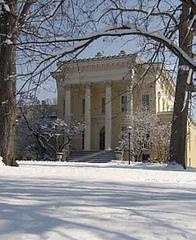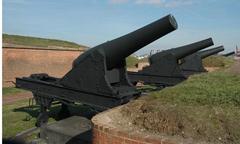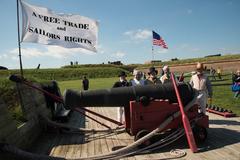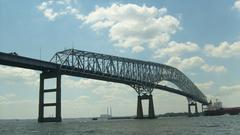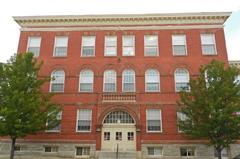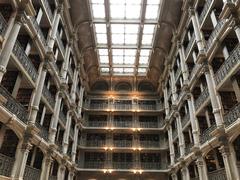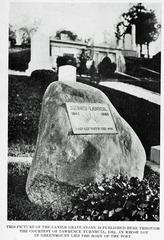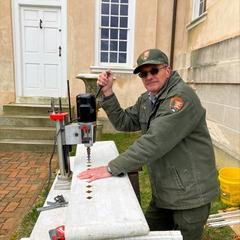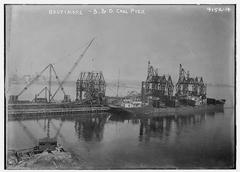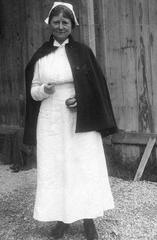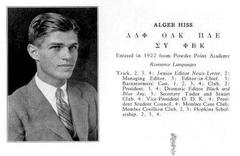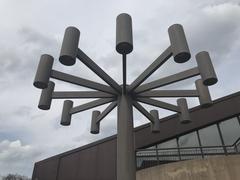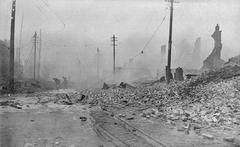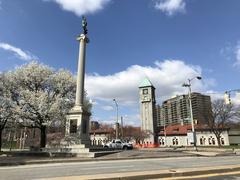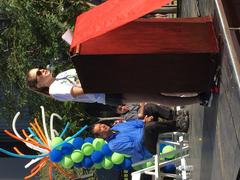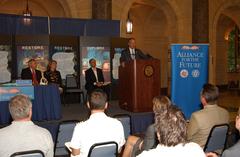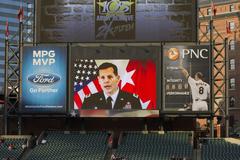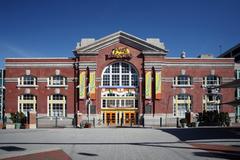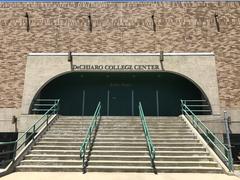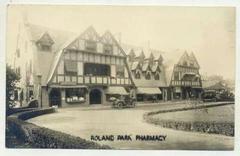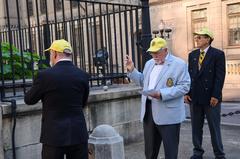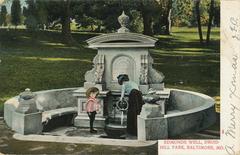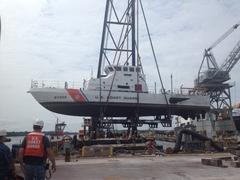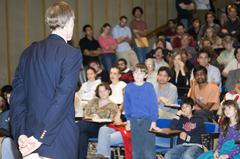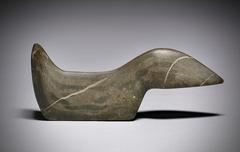Fallsway Fountain Visiting Hours, Tickets, and Baltimore Historical Sites Guide
Date: 03/07/2025
Introduction to Fallsway Fountain in Baltimore
At the crossroads of history, art, and urban renewal, the Fallsway Fountain in Baltimore, Maryland, stands as a remarkable testament to the city’s transformation from an industrial powerhouse to a modern metropolis. Located at the prominent intersection of The Fallsway and Chase Street, this outdoor public monument invites visitors to explore Baltimore’s heritage through an engaging blend of civic art and engineering ingenuity. Established during the early 20th-century urban renewal of Jones Falls—once a flood-prone, industrial waterway—the fountain reflects a pivotal era in the city’s environmental and infrastructural advancements.
The fountain, designed by acclaimed sculptor Hans K. Schuler and architect Theodore Wells Pietsch, is an exemplar of Beaux-Arts architecture. Its marble construction and intricate allegorical sculptures epitomize Baltimore’s resilience and civic pride, with the central figure—a woman bearing a shield featuring the city’s Battle Monument—anchoring it in the city’s monumental tradition. Today, the Fallsway Fountain offers not just historical resonance but also serves as a social hub and urban oasis, accessible year-round and free to the public. It is a vital node along the Jones Falls Trail and near historic neighborhoods like Hampden, Woodberry, Mount Vernon, and Jonestown.
For practical visitor information, guided tour options, and insights into nearby attractions, consult the Baltimore Visitor Center and take a virtual look at the site via this Sketchfab 3D Model. This comprehensive guide will help you plan a memorable visit to this emblematic Baltimore landmark.
Table of Contents
- Discover the Fallsway Fountain: A Historic Baltimore Landmark
- History of the Fallsway and Jones Falls Corridor
- Architectural and Sculptural Significance
- Integration with Urban Infrastructure
- Role in Baltimore’s Monumental Landscape
- Social and Cultural Impact
- Visiting the Fallsway Fountain: Practical Information
- Nearby Attractions and Things to Do
- Special Events and Community Activities
- Environmental and Educational Initiatives
- Preservation and Contemporary Relevance
- Comparative Significance
- Frequently Asked Questions (FAQ)
- Conclusion and Call to Action
Discover the Fallsway Fountain: A Historic Baltimore Landmark
The Fallsway Fountain is more than a decorative feature—it is a living symbol of Baltimore’s resilience, artistic heritage, and commitment to urban beautification. Its prominent location along The Fallsway at Chase Street makes it an essential stop for anyone interested in the city’s rich history and evolving urban landscape.
History of the Fallsway and Jones Falls Corridor
The Jones Falls corridor has been central to Baltimore’s economic and social development since the 18th century. Once lined with mills and factories, the waterway powered early industry and shaped surrounding neighborhoods. By the late 19th and early 20th centuries, recurring floods and pollution prompted city leaders to transform the area. The Jones Falls was channeled underground and The Fallsway boulevard was constructed above it, marking a new era of urban infrastructure and flood control.
The installation of the Fallsway Fountain in the early 20th century symbolized not only this engineering achievement but also the city’s commitment to melding functionality with public art (The Baltimore Banner; HMDB). The fountain thus commemorates Baltimore’s industrial past while celebrating its ongoing evolution.
Architectural and Sculptural Significance
Designed by Hans K. Schuler and Theodore Wells Pietsch, the fountain is a Beaux-Arts masterpiece. The use of marble, robust geometric basins, and allegorical figures reflects early 20th-century ideals of permanence, beauty, and civic pride. The central female figure, shield in hand, connects the fountain directly to the Battle Monument—Baltimore’s iconic symbol of resilience (Sketchfab).
The sculptural ensemble is both functional and symbolic, with water flowing over the marble surfaces, creating a sensory experience that animates the static forms. This interplay of water and stone exemplifies the era’s approach to public art, echoing classical European traditions while responding to the unique character of Baltimore (Formed Acqua).
Integration with Urban Infrastructure
The Fallsway Fountain was conceived as a civic ornament marking the successful covering and redirection of Jones Falls. The project included a massive underground conduit and a new boulevard that enabled downtown’s expansion. The fountain’s placement at a key intersection not only beautified the corridor but also marked the technological and civic progress of the era (The Baltimore Banner).
Role in Baltimore’s Monumental Landscape
Baltimore is known for its public monuments, and the Fallsway Fountain stands among the city’s most significant civic artworks. Schuler’s design reinforced the city’s reputation as a “Monumental City,” with the Battle Monument symbol linking the fountain to a broader tradition of public commemoration (Sketchfab).
Social and Cultural Impact
Beyond its architectural merit, the Fallsway Fountain is a vital social hub. It serves as a gathering space for community events, educational activities, and local celebrations. Its proximity to the Jones Falls Trail and neighborhoods like Mount Vernon and Jonestown make it a focal point for residents and tourists alike (Formed Acqua).
The fountain is also used for environmental education, with interpretive panels highlighting Baltimore’s waterways and sustainability efforts. Community programs and school groups often utilize the site for stewardship projects (Baltimore City Historical Society).
Visiting the Fallsway Fountain: Practical Information
- Location: Intersection of The Fallsway and Chase Street, Baltimore, MD.
- Visiting Hours: Open year-round, 24/7. The fountain typically operates during warmer months.
- Admission: Free—no tickets required (Baltimore Visitor Center).
- Accessibility: The area is wheelchair accessible, with level walkways and nearby transit stops.
- Guided Tours: While there are no tours dedicated solely to the fountain, several walking tours of the Jones Falls corridor include this landmark. Check with the Baltimore Visitor Center for details.
Travel Tips: Early mornings and late afternoons are ideal for a quieter visit. For major events, use public transport or rideshare services, as parking can be limited (WOLB Baltimore).
Nearby Attractions and Things to Do
The Fallsway Fountain is within walking distance of:
- Walters Art Museum
- Maryland Science Center
- Mount Vernon and Bolton Hill neighborhoods
- Jones Falls Trail for scenic walking and biking
- Inner Harbor and Mount Vernon Marketplace (Tourist Places Guide)
Special Events and Community Activities
During Baltimore’s festival seasons, the fountain area becomes a lively gathering place, hosting events like Artscape, July 4th celebrations, and food or music festivals (Baltimore Events). The site is also a popular launch point for historical walking tours and neighborhood festivals.
Environmental and Educational Initiatives
Fallsway Fountain highlights Baltimore’s focus on sustainability, with recirculated water systems and educational signage about the Jones Falls and urban green spaces. The site is frequently used for environmental education and stewardship activities by local schools and organizations (Baltimore City Historical Society).
Preservation and Contemporary Relevance
Ongoing preservation efforts by local advocates and city agencies ensure the fountain’s continued relevance. Restoration initiatives aim to maintain its structural and artistic integrity for future generations (The Baltimore Banner).
Comparative Significance
Among Baltimore’s historic fountains, the Fallsway Fountain stands out for its integration of art, engineering, and civic symbolism. Its Beaux-Arts design and allegorical sculptures distinguish it from newer, interactive fountains, while its historical context deepens its appeal (Family Destinations Guide).
Frequently Asked Questions (FAQs)
Q: Is there an admission fee to visit Fallsway Fountain?
A: No, the fountain is free and accessible year-round.
Q: What are the best times to visit?
A: Early mornings and late afternoons are tranquil; weekends and events are more lively.
Q: Are guided tours available?
A: Several local tours include the fountain as part of the Jones Falls corridor.
Q: Is the fountain accessible for visitors with mobility challenges?
A: Yes, paved paths and ramps ensure accessibility.
Q: Are there restroom facilities at the site?
A: No, but nearby neighborhoods offer public restrooms.
Conclusion and Call to Action
The Fallsway Fountain is a vibrant testament to Baltimore’s history, resilience, and dedication to public art. Its sculptural beauty, historical significance, and role as a community hub make it a must-visit for residents and visitors alike. Explore the fountain and surrounding attractions to experience the spirit of Baltimore’s monumental legacy.
Plan your visit today, and for enhanced experiences, download the Audiala app for guided audio tours. Stay updated on local events through the Baltimore Visitor Center, and share your experiences with us on social media.
References and Further Reading
- Baltimore Visitor Center
- Fallsway Fountain 3D Model on Sketchfab
- Visit Maryland
- Baltimore City Historical Society
- The Baltimore Banner
- Historical Marker Database – Fallsway Fountain
- Formed Acqua – Urban Fountains and Revitalization
- Baltimore Events
- Family Destinations Guide – Free Things to Do in Baltimore
- Tourist Places Guide
- WOLB Baltimore

